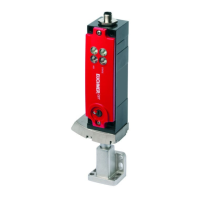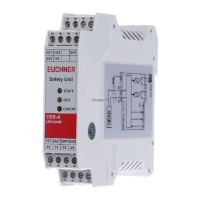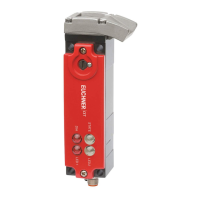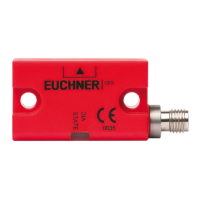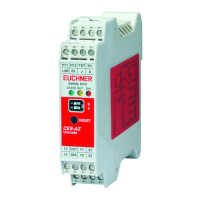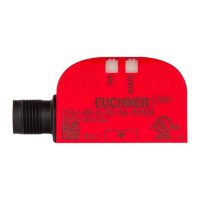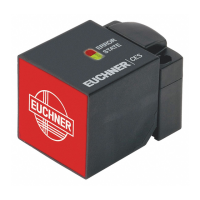Operating Instructions
Transponder-Coded Safety Switch CTM-LBI-BR
6
(Translation of the original operating instructions) 2525462-01-01/20
3. Description of the safety function
Devices from this series feature the following safety functions:
Monitoring of guard locking and the position of the guard
(interlocking device with guard locking according to ENISO14119)
Ì Safety function (see chapter 6.7. Switching states on page 9):
- The safety outputs are switched off when guard locking is released (monitoring of the locking element).
- The safety outputs are switched off when the guard is open (monitoring of the door position).
- Guard locking can be activated only when the actuator is located in the switch (faulty closure protection).
Ì Safety characteristics: category, Performance Level, PFH
D
(see chapter 12. Technical data on page 26).
Control of guard locking
If the device is used as guard locking for personnel protection, the control of the guard locking must be regarded as a
safety function.
The safety level of guard locking control is determined by the device PFH
D
int.
and by the external control (e.g. PFH
D
ext.
of
the standstill monitor), but cannot be higher than PLd.
PFH
D
int.
(internal electronic)
Guardlocking Device
PFH
D
ext.
(e.g. standstill
monitor)
(locking mean)
Safety characteristics: category, Performance Level, PFH
D
(see chapter 12. Technical data on page 26).
Releasing the guard locking
Ì Safety functions
- Guard locking remains activated until IMP requests releasing the guard locking.
The external control system must recognize and react to short circuits on these control signals. Fault exclusion, e.g. by
laying the cables with protection, can be considered as an alternative.
Voltage disconnection must apply to the machine (control system and device).

